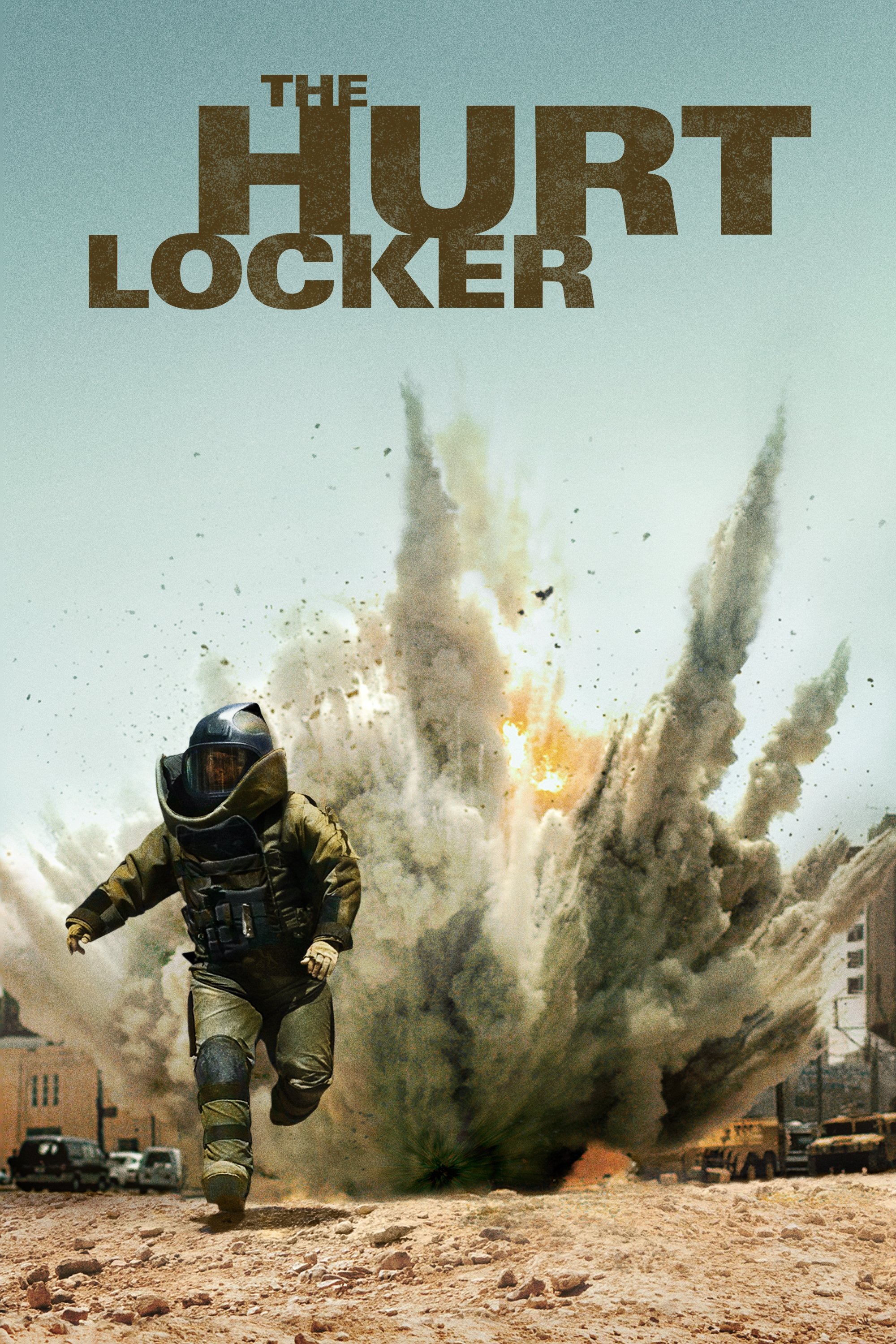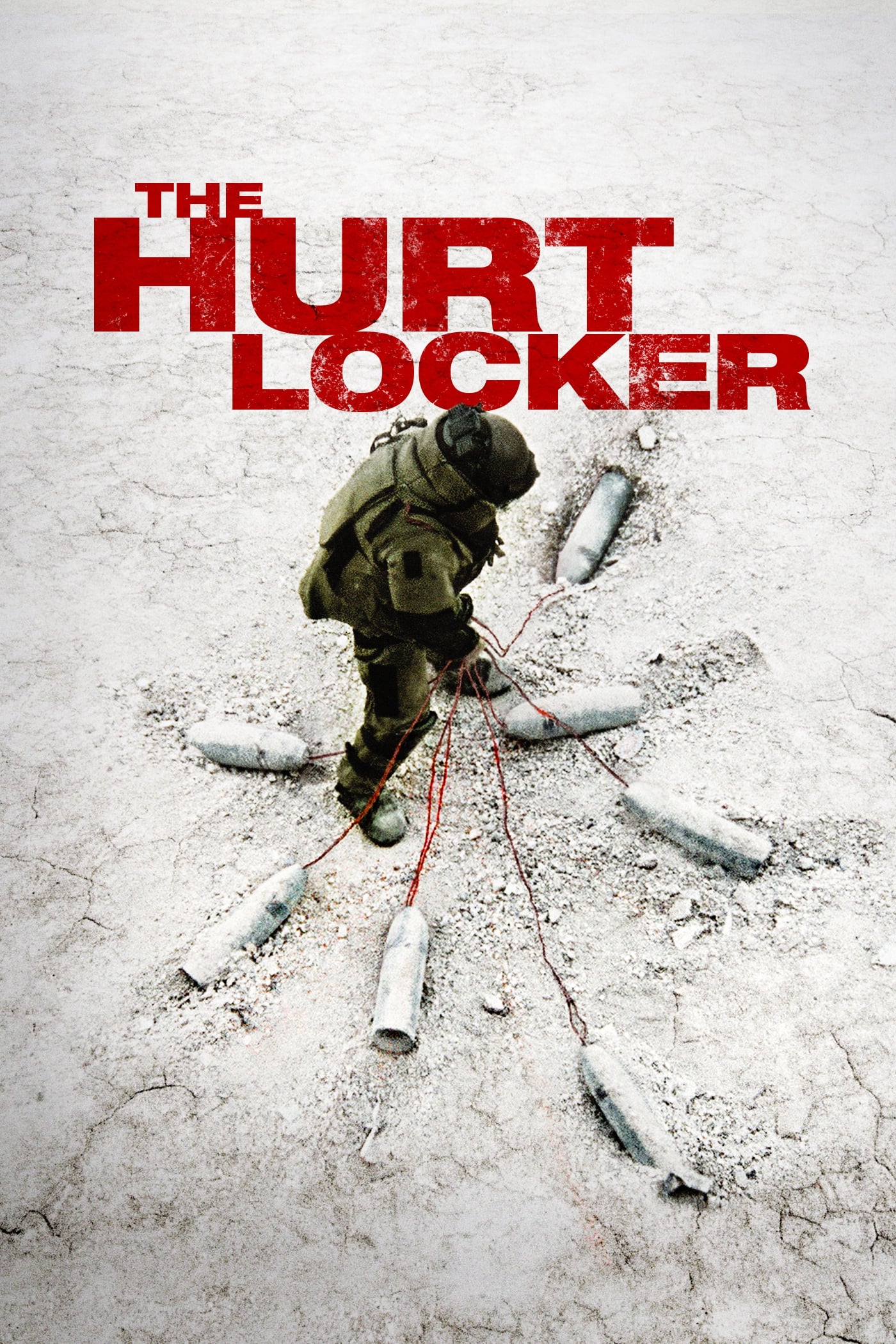Discovering 'The Hurt Locker': A Must-See War Film!
Can a film truly capture the raw, visceral experience of war, the relentless pressure cooker of danger, and the psychological toll it exacts? "The Hurt Locker," Kathryn Bigelow's unflinching 2008 masterpiece, not only attempts this feat but arguably achieves it, immersing the viewer in the harrowing world of bomb disposal experts in the Iraq War.
The film, a stark and often uncomfortable portrayal of the soldiers of the Explosive Ordnance Disposal (EOD) unit, thrusts us into the heart of the conflict. It's a world where every breath can be your last, where split-second decisions can mean the difference between life and death, and where the very definition of heroism is constantly tested. Bigelows masterful direction, coupled with a gritty realism, strips away the romanticism often associated with war, leaving behind a raw, unflinching exploration of human endurance under extreme pressure. Its a film that resonates long after the credits roll, leaving the viewer to contemplate the complexities of war, the bonds of brotherhood, and the price of survival.
| Title: | The Hurt Locker |
| Release Date: | June 26, 2009 (USA) |
| Director: | Kathryn Bigelow |
| Main Actors: | Jeremy Renner, Anthony Mackie, Brian Geraghty |
| Genre: | War, Drama, Thriller |
| Running Time: | 131 minutes |
| Budget: | $15 million |
| Box Office: | $49.2 million |
| Awards: | Won 6 Oscars |
| Filming Location: | Jordan, Kuwait |
| Production Company: | Voltage Pictures |
| Screenwriter: | Mark Boal |
| Cinematography: | Barry Ackroyd |
| Editing: | Chris Innis, Bob Murawski |
| Music: | Marco Beltrami, Buck Sanders |
| Reference: | IMDB |
The opening scenes of "The Hurt Locker" are a masterclass in tension building. A team of bomb disposal experts, Sergeant First Class William James (Jeremy Renner), Sergeant J.T. Sanborn (Anthony Mackie), and Specialist Owen Eldridge (Brian Geraghty), are introduced to the audience as they respond to a call in the heart of Baghdad. From the outset, the threat of IEDs (Improvised Explosive Devices) is omnipresent, and the camera, often handheld, places us directly in the chaos. The dust, the heat, the constant roar of the city all combine to create an environment of unrelenting stress, a stark contrast to the sterile environment of the EOD suits.
- Streamonsport In 2025 Find The Latest Address And Watch Live
- Sports Streaming Meth Lab Info What You Need To Know
James, the newly arrived team leader, is a man defined by his recklessness and expertise. He is a maverick, driven by an almost addictive compulsion to disarm bombs, a trait that both endears him to his men and endangers them. His disregard for protocol and safety guidelines creates friction with Sanborn, a more cautious and by-the-book soldier. The tension between the two men is a central theme of the film, reflecting the larger conflict between the need for survival and the lure of adrenaline.
The film's brilliance lies in its ability to portray the emotional complexities of war. It avoids simplistic narratives of good versus evil, instead focusing on the human cost. The soldiers, despite their training and courage, are vulnerable. They grapple with fear, boredom, and the ever-present threat of death. They are also bound by a profound sense of camaraderie, a bond forged in the crucible of shared experience. The scenes in the film's "Hurt Locker" the protective suits the soldiers wear are symbolic of the psychological distance the soldiers create between themselves and the dangers they face.
The cinematography, by Barry Ackroyd, is crucial to the film's immersive quality. The use of shaky, handheld cameras and close-ups places the audience directly in the action, emphasizing the immediacy and unpredictability of the environment. The heat haze, the dust, and the constant threat of unseen dangers contribute to a feeling of claustrophobia and tension. Bigelow's deliberate pacing and the sparse use of music further amplify the impact of the film's most suspenseful moments, forcing the viewer to share the characters' sense of vulnerability.
- Flexible Spending Hsa Login Help Your Guide To Accessing Benefits
- Discover Fosters Home For Imaginary Friends Latest News More
The film doesn't shy away from the brutal realities of war. The explosions are visceral and terrifying. The aftermath of bombings is portrayed with unflinching realism. The film's graphic violence isn't gratuitous; it serves to underscore the devastating consequences of conflict and the psychological toll it takes on those who experience it. One particularly poignant scene shows James's struggle with a civilian boy. This incident highlights the moral complexities of war, where every action can have unforeseen consequences, and where the lines between friend and enemy become increasingly blurred. This scene is one of many where the film does not offer easy answers but instead challenges the viewer to consider the human cost of war.
The performances are uniformly excellent. Jeremy Renner delivers a career-defining performance as James, capturing the character's complex mix of bravery, recklessness, and vulnerability. Anthony Mackie is equally compelling as Sanborn, grounding the film with his more measured approach. Brian Geraghty portrays Eldridge's fear and inexperience with remarkable sensitivity. The supporting cast, including Guy Pearce and Ralph Fiennes in brief but impactful roles, contributes to the overall realism of the film.
The "Hurt Locker" isn't just a war film; it's a character study. It explores the psychological impact of prolonged exposure to danger, the addictive nature of adrenaline, and the difficulty of reintegrating into civilian life. The ending, which sees James returning home to a life that is irrevocably changed by his experiences, is both devastating and resonant. His inability to fully connect with his wife and child speaks volumes about the profound and lasting impact of war on the human psyche.
The film's success lies not only in its technical brilliance but also in its ability to resonate with a broad audience. It won six Academy Awards, including Best Picture and Best Director (Bigelow, becoming the first woman to win the award), proving its universal appeal. It sparked debates about the nature of heroism, the psychological impact of war, and the role of the United States in the Iraq War. The film has become a landmark of modern cinema, its enduring power stemming from its unflinching realism, its compelling characters, and its unflinching gaze at the human cost of conflict.
The film's depiction of the "Hurt Locker" - the bomb disposal suits - becomes a symbol of isolation, both physical and psychological. Inside these suits, the soldiers are protected from the blast but also cut off from the world, alone with the ticking time bomb and their own thoughts. This isolation is a key theme, reflecting the soldiers' experience of war itself: a profound disconnect from the normalcy of civilian life, and the difficulty of relating to those who have not shared their experiences.
The editing, by Chris Innis and Bob Murawski, plays a critical role in building tension. The film uses a fast-paced, almost frenetic editing style during the bomb disposal sequences, mirroring the characters' sense of urgency and danger. The cuts are sharp and precise, emphasizing the immediacy of the threat. In contrast, the editing slows down during scenes of quieter reflection, allowing the audience to fully absorb the characters' emotional states. This masterful use of editing keeps the viewer constantly engaged.
The film's exploration of the Iraq War, while not explicitly political, serves as a powerful commentary on the human consequences of the conflict. The film avoids taking sides or offering easy answers. It focuses instead on the experiences of the soldiers on the ground, highlighting the complexities of the conflict and the toll it takes on those who fight it. This nuance and depth of character are what make "The Hurt Locker" far more than just a war film.
The film also shines a light on the camaraderie among soldiers. In the midst of constant danger and the ever-present threat of death, the bond of brotherhood becomes essential for survival. The scenes depicting the soldiers' interactions, their shared laughter, their mutual support, and their reliance on each other, are as compelling as the bomb disposal sequences. These scenes provide a much-needed contrast to the violence and chaos, showing the human element that often gets lost in the discussion about war.
The score, by Marco Beltrami and Buck Sanders, is used sparingly, which serves to heighten the tension. The sound design is masterful, and the lack of music in many of the key scenes contributes to the films realism. The silence is broken only by the sounds of the city, the ticking of bombs, and the ragged breathing of the soldiers all elements that heighten the tension.
The film's legacy extends beyond its cinematic achievements. "The Hurt Locker" has influenced countless filmmakers and has inspired new approaches to war films. The film's realistic portrayal of the Iraq War has been praised by veterans and critics alike for its authenticity. It has also sparked important conversations about the psychological impact of war and the challenges faced by returning veterans. "The Hurt Locker" is more than just a film; it is a powerful and enduring exploration of the human condition in the face of extreme adversity.
In conclusion, "The Hurt Locker" is a cinematic triumph, a visceral and thought-provoking exploration of war and its impact on those who fight it. Its unflinching realism, compelling characters, and masterful direction make it a film that stays with you long after the credits roll. The film offers no easy answers, it challenges the viewer to contemplate the complexities of conflict and the enduring power of the human spirit. It stands as a testament to the courage and resilience of those who serve in war, and a stark reminder of the price of conflict.
- Bob Marley One Love Showtimes Tickets Amp Where To Watch
- Game Of Thrones Season 2 Watch Now Explore Westeros

The Hurt Locker (2008) Posters — The Movie Database (TMDB)

The Hurt Locker (2008) Posters — The Movie Database (TMDB)

The Hurt Locker on iTunes